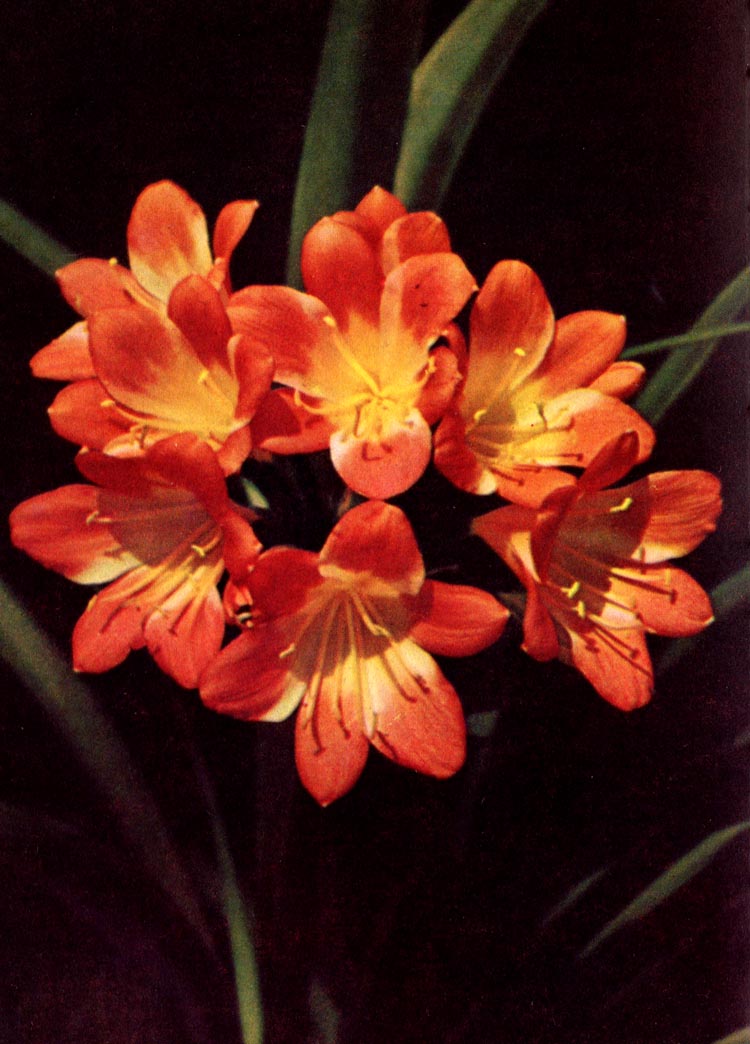 CLIVIE; BELT BLADE
CLIVIE; BELT BLADE
Clivia mini eat Regel Familie: amaryllis – Amaryllidaceae
Name: Nach Lady Clive, later Duchess of Northumberland (Nord-England); threatened, -a, -um years. = menmine colored (from rninium = red lead; according to the color of the flowers of the parent species). The German name "Riemenblatt" refers to the long and narrow leaves.
origin: Natal (eastern South Africa); Valley slopes of the East Downs of the South African Highlands.
Heyday: February to May; often as early as January, rarely in summer. Cultivation: From side shoots; Mass growing in nurseries from seeds of selected ones, hand-pollinated mother plants.
Care requirements: Moderately warmer, heller, location protected from strong sunlight. From January to September it should always be watered abundantly; after flowering, it can be watered weekly with a complete fertilizer solution. After flowering, clivia can also be placed outdoors throughout the summer; warm rain is good for them. From September, however, they should definitely be put back into the room. The plants are kept cooler from October to December (at about 10 °C) and supplies them only sparsely with water, so that they "mature". If such a rest period is not switched on, then the clivia will not bloom! A repot, that's all 2 to 3 Years in little larger vessels is required, best done after flowering. It is important to ensure, that the fleshy roots are not damaged. Side shoots formed on the plant can be separated and cultivated individually in small pots. If the location is suitable and they are transplanted into slightly larger pots every year, these young plants will flower in their third year. The soil is a mixture of compost soil, Ratio of peat and sand 4:1:1 to use.
Special: The Clivie, whose German name "Riemenblatt" is hardly ever used, has counted to Europe since its introduction (middle of the last century) one of the most common houseplants. Even after the flowering period, healthy plants with numerous evergreen leaves are very decorative. The clivia also thrives quite well in darker places. In general, the vessels should be as small as possible, because the plants will flower more safely then. The smaller the pot, but one must water and fertilize all the more carefully and frequently. Plants that are kept indoors must be washed more often on both sides of the leaves, otherwise mealybugs can easily set in.